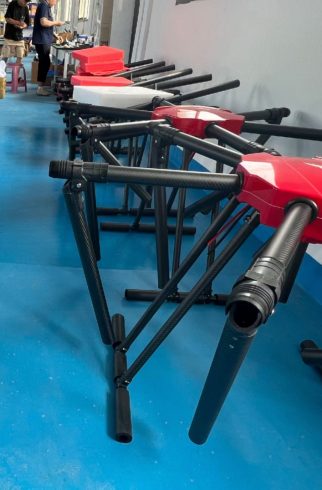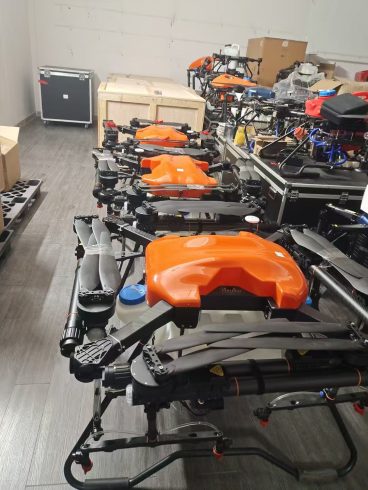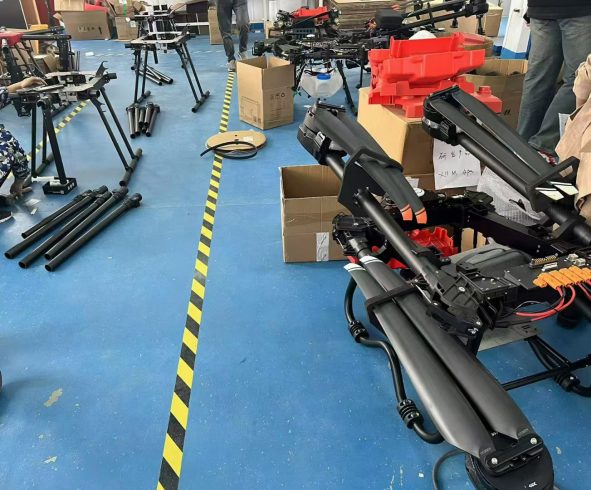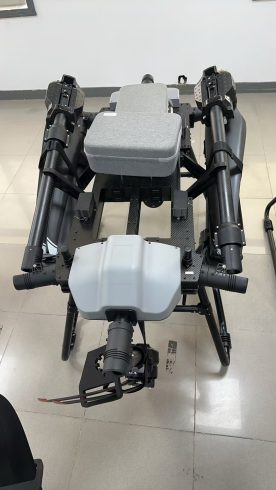![图片[1]-High-Payload Drones for Spraying: Revolutionizing Precision Agriculture and Operational Efficiency-msoen](https://www.msoen.com/wp-content/uploads/2025/04/0f937885e9184642-1024x849.jpg)
Introduction
The agricultural drone industry is witnessing a surge in demand for high-payload spraying drones, designed to tackle large-scale farming challenges with unmatched efficiency. These drones, capable of carrying 30 liters or more of pesticide or herbicide, are redefining how farmers approach crop management, offering solutions for time-sensitive tasks, rugged terrains, and labor shortages. This article explores the technical advancements, applications, and economic benefits of high-payload spraying drones, while addressing regulatory considerations and future trends shaping the sector.
- What Define High-Payload Spraying Drones?
High-payload spraying drones are advanced Unmanned Aerial Vehicles (UAVs) engineered for industrial-scale agricultural applications. Unlike traditional multi-rotor or fixed-wing drones, they prioritize payload capacity, flight endurance, and spray accuracy. Key features include:
- Large Tanks: Capacities ranging from 30L to 100L, reducing refueling frequency.
- Heavy-Duty Build: Reinforced frames and corrosion-resistant materials for durability in harsh environments.
- Smart Spray Systems: Adjustable nozzles, flow sensors, and GPS-guided automation for precise chemical distribution.
- Technical Advancements Driving Innovation
a. Enhanced Battery and Power Systems
- Hybrid Engines: Combining electric and combustion power to extend flight times (up to 2 hours) and payload capacities.
- Fast-Charging Batteries: Reducing downtime with lithium-sulfur or solid-state batteries. b. AI-Powered Automation
- Obstacle Avoidance: LiDAR and multispectral sensors enable safe navigation in dense fields.
- Variable Rate Spraying: AI algorithms adjust chemical application rates based on real-time crop health data. c. Modular Design
- Interchangeable nozzles, tanks, and sensors for versatility in diverse farming scenarios (e.g., orchards, vineyards, row crops).
- Applications of High-Payload Spraying Drones
a. Large-Scale Row Crop Farming
- Ideal for wheat, corn, and soybean fields, where drones can cover 50–100 hectares per day, outpacing manual labor.
- Example: A Brazilian soybean farm reduced herbicide costs by 25% using drones to treat hard-to-reach areas. b. Orchard and Vineyard Management
- Precision spraying in dense, uneven terrains where traditional machinery struggles.
- Case Study: A Spanish vineyard cut pesticide use by 30% with drones that target individual vines. c. Emergency Crop Rescue
- Rapid response to pest outbreaks or fungal infections, minimizing yield loss.
- Example: An Indian rice farm averted disaster by deploying drones to treat a spreading blight overnight. d. Environmental Conservation
- Reduced chemical runoff and soil compaction compared to ground-based sprayers.
- Economic and Operational Benefits
a. Cost Efficiency
- Lower Labor Costs: Eliminates reliance on manual sprayers or expensive machinery rentals.
- Fuel Savings: Electric drones consume 60% less energy per hectare than tractors. b. Increased Yields
- Targeted application improves crop health, with some farms reporting 15–20% yield increases. c. Scalability
- Drones can be deployed in remote or expanding farmlands without infrastructure investments.
- Challenges and Solutions
a. Regulatory Hurdles
- Payload Restrictions: Some regions cap drone weights at 55 lbs (25 kg). Operators must verify local laws (e.g., FAA Part 107 in the U.S., EASA’s Specific Category in Europe).
- Certification Requirements: High-payload drones often require advanced pilot licenses and hazardous material certifications. b. Technical Limitations
- Battery Life: Hybrid systems and solar-powered charging stations are mitigating endurance gaps.
- Initial Costs: Leasing programs or government subsidies (e.g., EU’s Common Agricultural Policy) help farmers adopt the technology. c. Environmental Concerns
- Chemical Drift: Smart spray systems and wind sensors minimize off-target dispersion.
- Future Trends in High-Payload Drone Spraying
- Swarm Technology: Coordinated fleets of drones working together to cover vast areas autonomously.
- IoT Integration: Syncing drones with soil sensors, weather stations, and farm management software for predictive analytics.
- Sustainability Focus: Bio-degradable drones and organic pesticide compatibility to align with eco-friendly farming practices.
- How to Choose the Right High-Payload Drone
- Assess Farm Size and Crop Type: Prioritize drones with extended range for large farms or specialized nozzles for delicate crops.
- Evaluate Payload and Endurance: Ensure the drone matches daily operational needs (e.g., 50L capacity for 50-hectare plots).
- Check Compliance: Confirm adherence to regional regulations and obtain necessary certifications.
- Test Spray Accuracy: Request demos to evaluate nozzle performance and software integration.
- Case Study: Transforming African Agriculture
A cooperative in Kenya deployed high-payload drones to combat locust swarms, treating 200 hectares in a single day. The drones’ ability to operate in remote areas without runway access made them indispensable, safeguarding livelihoods and food security.
Conclusion
High-payload spraying drones are transforming agriculture by addressing critical challenges of scale, efficiency, and sustainability. While regulatory and technical hurdles persist, advancements in AI, hybrid power systems, and swarm technology promise even greater adoption. For farmers and agribusinesses, investing in these drones is no longer optional—it’s a strategic imperative to thrive in a competitive, climate-resilient future.
Keywords: high-payload spraying drones, agricultural drone technology, precision farming equipment, large-scale pesticide application, drone payload capacity, smart farming solutions.












暂无评论内容